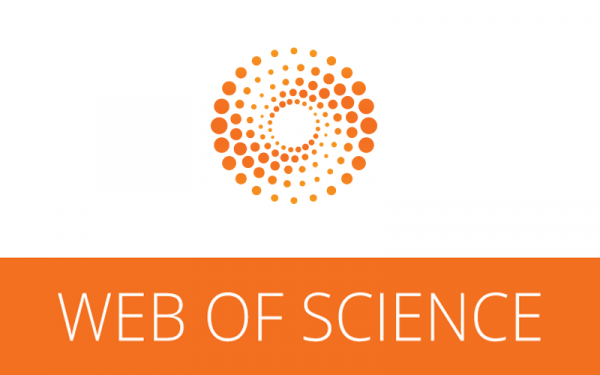CITIZEN SCIENCE FOR CLEAN BEACHES: PARTICIPATORY DIAGNOSIS OF MARINE DEBRIS IN MOCHIMA NATIONAL PARK, VENEZUELA
Abstract
Plastic waste pollution in coastal environments represents one of the main threats to marine biodiversity and ecosystem health. In this context, citizen science emerges as a powerful tool for participatory environmental diagnostics and the strengthening of ecological awareness. This study aimed to characterize the solid waste collected in the community of Mochima, located within the Mochima National Park, Sucre state, Venezuela, through a collaborative monitoring event involving students, teachers, and volunteers. Through activities of collection, classification, and environmental awareness, a total of 673 items were recovered, 74% of which were plastics, with a predominance of single-use bags, bottles, and wrappers. In addition to identifying the composition and predominant colors of the waste, the experience helped strengthen local capacities in environmental analysis, promote non-formal education, and consolidate community co-responsibility values. The results highlight the potential of participatory methodologies to generate useful data, encourage behavioral changes in consumption habits, and contribute to achieving the Sustainable Development Goals, particularly SDG 4, SDG 12, and SDG 14.
References
ANASTÁCIO, J. et al. Relationships between marine litter and type of coastal area, in Northeast Atlantic sandy beaches. Mar. Environ. Res., v. 183, p. 105827, 2023. https://doi.org/10.1016/j.marenvres.2022.105827
AUTA, H. S.; EMENIKE, C. U.; FAUZIAH, S. H. Distribution and importance of microplastics in the marine environment: a review of the sources, fate, effects, and potential solutions. Environ. Int., v. 102, p. 165–176, 2017. https://doi.org/10.1016/j.envint.2017.02.013
BOUR, A. et al. Microplastic vector effects: are fish at risk when exposed via the trophic chain? Front. Environ. Sci., v. 8, p. 90, 2020. https://doi.org/10.3389/fenvs.2020.00090
DE RAMOS, B. et al. Spatio-temporal characterization of litter at a touristic sandy beach in South Brazil. Environ. Pollut., v. 280, p. 116927, 2021. https://doi.org/10.1016/j.envpol.2021.116927
EMENIKE, E. C. et al. From oceans to dinner plates: The impact of microplastics on human health. Heliyon, v. 9, n. 10, 2023. https://doi.org/10.1016/j.heliyon.2023.e19957
GAMBOA, A. C.; PINTO, C.; GUTIÉRREZ, G.; RAMÍREZ, J. I. Basura plástica y microplásticos: contaminantes emergentes presentes en sedimentos de una playa urbana del oriente venezolano. Cienc. Ing., v. 9, n. 1, p. 1, 2022. https://www.doi.org/10.5281/zenodo.6706296
GESAMP – Joint Group of Experts on the Scientific Aspects of Marine Environmental Protection. Guidelines for the monitoring and assessment of plastic litter in the ocean. Londres: IMO/FAO/UNESCO-IOC/UNIDO/WMO/IAEA/UN/UNEP, 2019. (Reports and Studies – n. 99).
GRILLO, J. F. et al. Microplastics in Latin America and the Caribbean: On the adoption of reporting standards and quality assurance and quality control protocols. Environ. Adv., v. 8, p. 100236, 2022. https://doi.org/10.1016/j.envadv.2022.100236
KANHAI, L. D. K.; ASMATH, H.; GOBIN, J. F. The status of marine debris/litter and plastic pollution in the Caribbean Large Marine Ecosystem (CLME): 1980–2020. Environ. Pollut., v. 300, p. 118919, 2022. https://doi.org/10.1016/j.envpol.2022.118919
LOGANATHAN, Y.; KIZHAKEDATHIL, M. P. J. A review on microplastics-an indelible ubiquitous pollutant. Biointerf. Res. Appl. Chem., v. 13, n. 2, p. 126, 2023. https://doi.org/10.33263/BRIAC132.126
NELMS, S. E. et al. The role of citizen science in addressing plastic pollution: Challenges and opportunities. Environ. Sci. Policy, v. 128, p. 14–23, 2022. https://doi.org/10.1016/j.envsci.2021.11.002
NOH, H. J.; MOON, Y.; SHIM, W. J.; CHO, E. V.; HONG, S. H. Experimental study on color and texture as cues for plastic debris ingestion by captive sea turtles. Mar. Pollut. Bull., v. 200, p. 116055, 2024. https://doi.org/10.1016/j.marpolbul.2024.116055
NÚÑEZ, F.; HERNÁNDEZ, M. Aportes para el conocimiento del Parque Nacional Mochima: Estudio sedimentológico preliminar de las ensenadas Cautarito y Manare. Rev. Obs. Conoc., v. 3, n. 2, p. 9–14, 2016.
PIMIENTA-SERRANO, E. V.; PACHECO-BUSTOS, C. Perspectivas sobre el impacto ambiental de las actividades antropogénicas y la generación de residuos sólidos en playas del Caribe colombiano. Ing. Competit., v. 24, n. 2, 2022. https://doi.org/10.25100/iyc.v24i2.11365
RIOS, M. F. et al. Microplásticos: macroproblemas. Rev. Invest. Desarr. Tecnol., v. 21, n. 2, p. 100–115, 2020.
SANTOS, R. G.; ANDRADES, R.; FARDIM, L. M.; MARTINS, A. S. Marine debris ingestion and Thayer's law–The importance of plastic color. Environ. Pollut., v. 214, p. 585–588, 2016. https://doi.org/10.1016/j.envpol.2016.04.024
SINHA, R. K.; KUMAR, R.; PHARTYAL, S. S.; SHARMA, P. Interventions of citizen science for mitigation and management of plastic pollution: Understanding sustainable development goals, policies, and regulations. Sci. Total Environ., 2024, p. 176621. https://doi.org/10.1016/j.scitotenv.2024.176621
SMITH, M. et al. Microplastics in seafood and the implications for human health. Curr. Environ. Health Rep., v. 5, p. 375–386, 2018. https://doi.org/10.1007/s40572-018-0206-z
UNITED NATIONS ENVIRONMENT PROGRAMME. From pollution to solution: a global assessment of marine litter and plastic pollution. Nairobi: UNEP, 2021.
VOHLAND, K. et al. The science of citizen science. Cham: Springer Nature, 2021. https://doi.org/10.1007/978-3-030-58278-4
YAN, J. et al. Microplastics and their impacts on organisms and trophic chains. Water, v. 14, n. 24, p. 4069, 2022. https://doi.org/10.3390/w14244069

This work is licensed under a Creative Commons Attribution-NonCommercial 4.0 International License.
Policy Proposal for Free Access Journals
Authors who publish in this journal agree to the following terms:
a. Authors retain the copyright and grant the journal the right of first publication, with the work simultaneously licensed under the Creative Commons Attribution License which allows the sharing of the work with acknowledgment of the authorship of the work and initial publication in this journal.
b. Authors are authorized to take additional contracts separately, for non-exclusive distribution of the version of the work published in this journal (eg publish in institutional repository or as a book chapter), with acknowledgment of authorship and initial publication in this journal.
c. Authors are allowed and encouraged to publish and distribute their work online (eg in institutional repositories or on their personal page) at any point before or during the editorial process, as this can generate productive changes, as well as increase the impact and The citation of published work (See The Effect of Free Access).





















